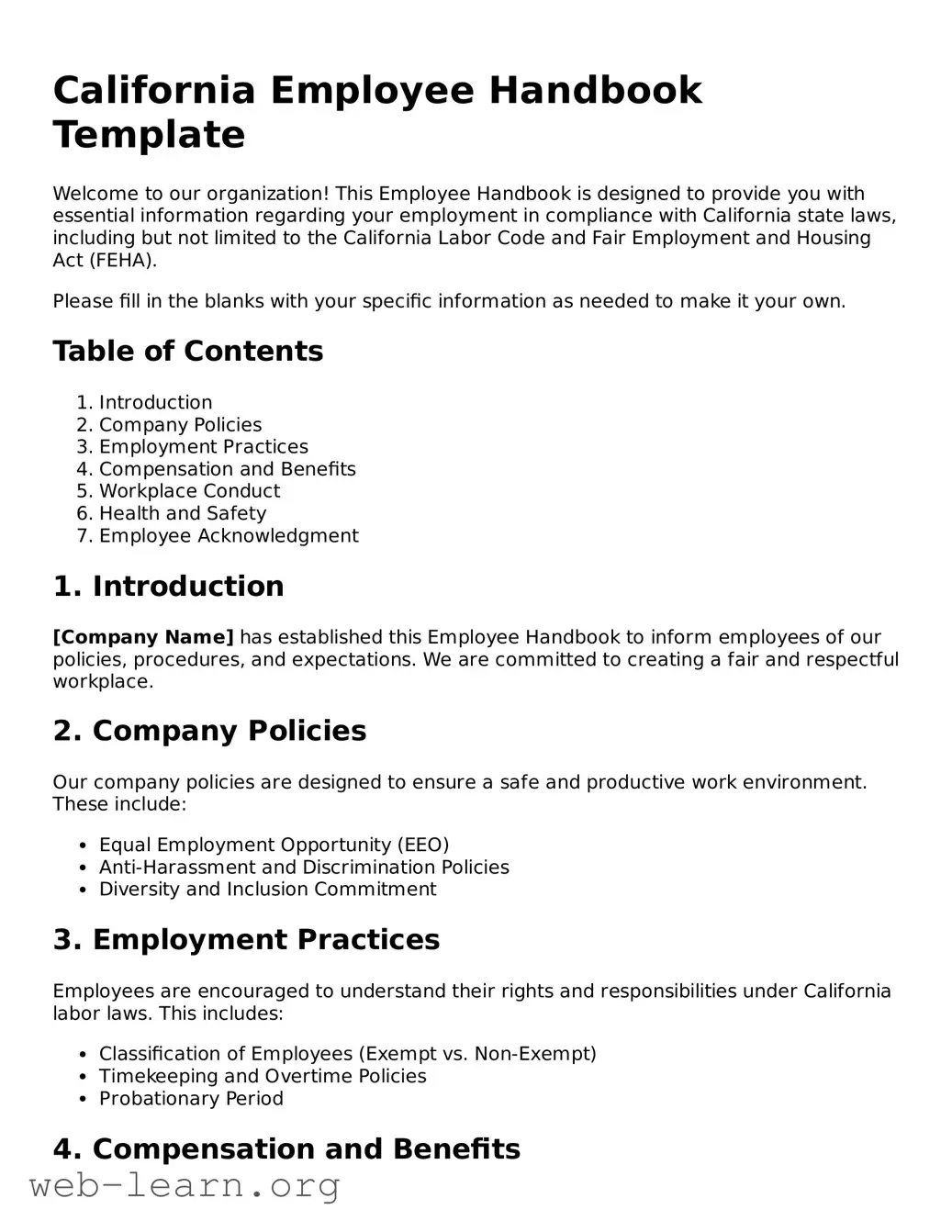California Employee Handbook Template
Welcome to our organization! This Employee Handbook is designed to provide you with essential information regarding your employment in compliance with California state laws, including but not limited to the California Labor Code and Fair Employment and Housing Act (FEHA).
Please fill in the blanks with your specific information as needed to make it your own.
Table of Contents
- Introduction
- Company Policies
- Employment Practices
- Compensation and Benefits
- Workplace Conduct
- Health and Safety
- Employee Acknowledgment
1. Introduction
[Company Name] has established this Employee Handbook to inform employees of our policies, procedures, and expectations. We are committed to creating a fair and respectful workplace.
2. Company Policies
Our company policies are designed to ensure a safe and productive work environment. These include:
- Equal Employment Opportunity (EEO)
- Anti-Harassment and Discrimination Policies
- Diversity and Inclusion Commitment
3. Employment Practices
Employees are encouraged to understand their rights and responsibilities under California labor laws. This includes:
- Classification of Employees (Exempt vs. Non-Exempt)
- Timekeeping and Overtime Policies
- Probationary Period
4. Compensation and Benefits
We offer a competitive compensation package, which includes:
- Salary Details
- Health Insurance Options
- Retirement Benefits
- Paid Time Off (PTO) Policy
5. Workplace Conduct
Maintaining a professional and respectful workplace is essential. All employees are expected to adhere to the following standards:
- Attendance and Punctuality
- Dress Code
- Use of Company Property
6. Health and Safety
The safety of our employees is a top priority. Employees must:
- Comply with safety policies and procedures
- Report any unsafe conditions or concerns
- Participate in safety training as required
7. Employee Acknowledgment
By signing below, you acknowledge that you have received, read, and understood the [Company Name] Employee Handbook.
Employee Name: _________________________
Employee Signature: _________________________
Date: _________________________
Thank you for being part of our team!
